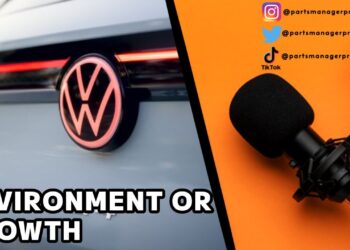This is the first time the 2022 Ford F-150 Lightning has a direct competitor. The 2024 Chevy Silverado EV was shown off last week. And, of course, we’re interested in seeing how they fair against one another. With a limited number of trim and engine options for the Chevy in its initial year, we can begin to make meaningful comparisons and contrasts. There are some areas with which we can look at now that we’ve said. As a result, let’s start now.
Actually before we get started, we would love it if you would join our community and smash that subscribe button and hey, hit that like button too. Why not? Alright, back to the story.
First, lets look at the The Power and Torque
Chevy has more power than Ford, but torque isn’t clear-cut. The Silverado EV Work Truck (WT) comes standard with 510 horsepower, whereas the RST is capable of up to 664 horsepower. The Lightning also has two motors and four-wheel drive. The short-range design makes 426 horsepower, and in the long-range one, it makes 563 horsepower, so it has a lot of power. You get 775 pound-feet of torque, no matter what kind of Lightning you have. This is the Silverado EV WT. It only has 615 pound-feet of torque. The Lightning has 780 pound-feet more than the RST.
Let’s look at Towing, Payload, And the Length of a Bed
After a few years, both Ford and Chevy are getting better at their cars. With a maximum towing capacity of 10,000 pounds and a payload capacity ranging from 1,800 to 2,000 pounds, the Ford is the clear winner in terms of both towing and payload. The Chevy can tow between 8,000 but also 10,000 pounds and carry between 1,200 and 1,300 pounds. Because each truck is different, the numbers are different too.
With a bed that is 5 feet 11 inches long, the Chevy comes out on top. The Ford has a bed that is 5 feet 6 inches long. With the optional Midgate, Chevy’s back seats can be folded flat, and the rear glass may be removed, allowing more luggage space within the cabin. Both trucks have a trunk in the front, but Chevy hasn’t yet said how much space there is. On the other hand, the Ford has a nose area of 14.1 cubic feet.
As a backup power source for your home, Lightning could also be used to charge your appliances. You get 2.4 kW of power from the base model. The Lariat and Platinum models get 9.6 kW of energy, which can run the fridge and lights when your home loses electricity. You can also use up to 11 outlets. Ford has an accessible 80-amp home management system.
Chevy hasn’t said the same thing about the Silverado EV, but there’s still a lot of room for growth. When the Silverado EV goes on sale, it will have 10 outlets to charge things at campsites and job sites. There will also be a 240-volt outlet in its bed. It will have 10.2 kW charging capability and, like Lightning, can charge other EVs.
Other Key Features
Both trucks would be able to help you drive on the highway without having to touch your hands. A system called BlueCruise is used by Ford cars, while a system called Super Cruise is used by Chevy cars. There will also be a model used while towing a trailer. This one will have automatic lane changes that can be used while towing. The Chevy can also be equipped with four-wheel steering and air suspension. Another option for the Silverado EV is the Multi-Flex tailgate, which has a built-in step and work surface. The Ford can have a towable shifter and a folding worktop inside. On the top-level Lightning, you can get a fully reclining front seat that’s great for taking a nap when you’re not behind the wheel.
How about Pricing?
When it comes to this, Ford has a significant advantage right now. It costs $41,669 with the destination charge, not including the federal tax credit of $7,500 that you can get. Ford also has a lot of different trims and battery options, as well as the truck, is already being made and will be on the market soon.
Regular customers will only get one trim level for the first year of the 2024 model. Many extras make the RST cost $105,000 as a base price. It’s called the RST. That doesn’t include the charge for getting to your destination, which may not have been set yet, either. Another thing: It won’t be on sale until late next year. However, if you are willing to wait until the 2025 model year, Chevrolet will offer many additional trim levels and engine choices. To start, 2025 models will cost $38,900 without a delivery fee. This is almost the same price Lightning models begin at.
So which one do you like better?
source








